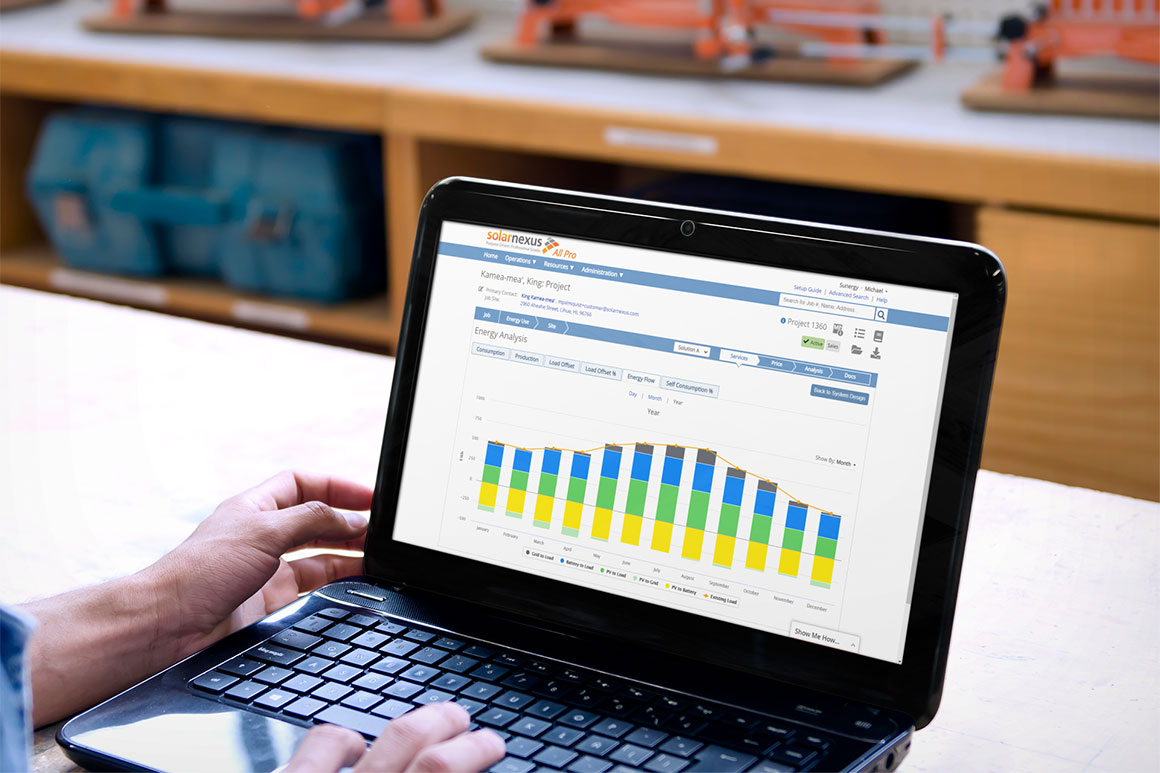By Michael Palmquist
There are dozens upon dozens of project management tools to choose from today. As a business owner, it can be difficult to find the right fit. For many solar companies, the typical progression goes from Excel sheets to freemium software, and finally, to a full fledged project management tool.
It can be hard to tell the difference between project management software options. All of the features tend to look the same – it may be difficult to recognize when it is the right time to switch. Will the grass actually be greener on the other side? Am I better off sticking with the tool I have? Should I just learn how to use this thing or is an upgrade the right way to go.
Here are the top 3 red flags to look out for if you’re wondering if it is time for a software upgrade:
1. You or some of your employees are using an Excel spreadsheet as a dashboard.
Excel is an engineer’s best friend, but using a spreadsheet as a dashboard is a sign of something lacking in your software. The most common reasons for reliance on excel are:
Your PM tool doesn’t give you the visuals you need. The common refrain I’ve heard from most companies is, “We just use excel to keep track of xyz thing” or ”some employees just use it to track small things for themselves personally.” The key is – if it is useful to keep the team or individuals on track, it is worth investigating a Project Management tool that can do it for you.
You’re just starting out. Spreadsheets are cheap and take virtually no time to get employees up to speed on. Maintaining them however is a manual process and not scalable.
You are a VBA Wizard. Occasionally we get someone who just really likes excel. They get it- they work well in it- and they have everything programmed. Although this can work well, Wizards don’t always stay at companies forever. And when they leave, you could be stuck with something that is difficult for others to understand, modify, and maintain. And that time may be better spent elsewhere.
2. You have too many integrations to count between your tools.
Let’s face it there is possibly one person on your team who understands this system. It may work well, but you are one resignation away from being sideways.
Integrations are useful and helpful to get your tools to talk to each other and prevent fragmented or disconnected information. There is a point where you may be overdoing it with external tools and custom integrations. You want to ensure your tool will be resilient enough to withstand people moving on and robust enough to make changes without a real problem on your hands
If you need 3 different pieces of software added on to your system to turn a form into a PDF and put it in your document storage system–one to generate a text file, one to turn text into a PDF, and one to download the PDF and put it in your software– it may be worthwhile to look at software with some of these features pre-built. After all, these one-feature wonder software subscriptions can add up!
3. Project managers need to spend time determining priorities
Solar Project Management is a demanding job, and it is only made more so when employees need constant guidance on what to work on next. Keeping track of sometimes hundreds of projects at once is no small feat, and knowing where each project is in your projected timeline can be difficult to keep track of, especially for businesses that are growing and integrating new members to operations.
You know your desired timeline, and your project management tool should be helping you hold all of your projects to it. Having a task board that is easy to understand not only helps your employees stay on track during the work day, but it also helps in onboarding new employees so you don’t have to give them assignments task by task. Project Management software should optimize the use of your PM’s time and let them be able to not just meet the bare minimum of your customer expectations, but exceed them!
Although we don’t believe any software is inherently bad, some are a poor fit for your organization or for your particular application. PM software should work to make your employees’ lives easier through both saving time and minimizing mistakes.
Although there are many pieces of software that can be customized through the use of external software, it doesn’t mean it should be. As we have seen, over-customization usually results in either a bandaid system with one person who understands it in its entirety, or an expensive 6 figure solution including consulting and configuration fees to make it just right.
With solar specific software now on the market, you can not only get a robust solution for your application, but you can change things as you go without breaking the bank or risking the many hours invested in integrations completely collapsing. Built-in integrations to all your tools are key in having a centralized data source and optimizing your employees’ use of time so they can spend time on the things that matter most.
Solar contracting is a tough business. We know because we’ve been there. Our mission is to accelerate the adoption of distributed solar and energy saving technologies by increasing the efficiency and productivity of the contracting companies offering these services. If you’d like to learn more, fill out this quick form to get in contact with a member of SolarNexus today.
